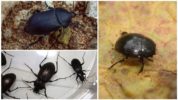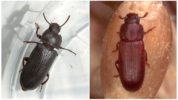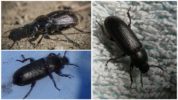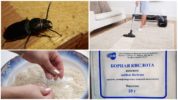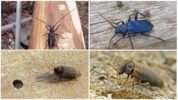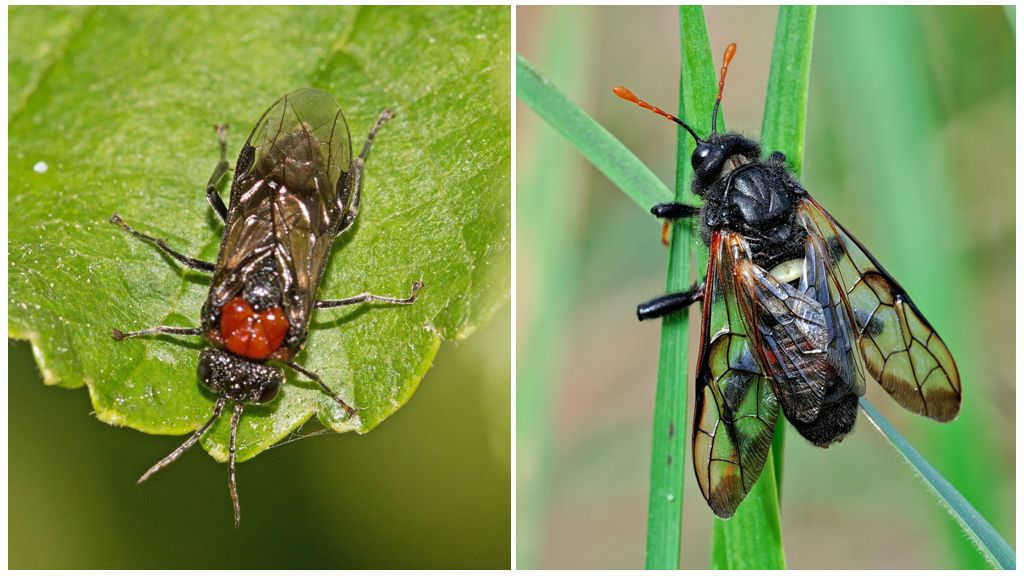- Black beetles in the apartment
- Big and small Khrushchak
- Black Khrushchak
- Fighting bugs in the house
- Bark beetles
It’s a very unpleasant situation to find in your apartment a settlement of bugs that not only run, but also fly through the rooms. How does a black beetle appear in an apartment, what is called and how to deal with it - the answers to these questions will interest homeowners.
Where do bugs come from in an apartment
When the owners notice that black beetles appeared in the room, despite the fact that there was no mess in the room and the cleaning was done on time, the question immediately arises of where they might come from.
Ways of the appearance of beetles in the apartment:
- cracks in the walls, window frames, into which small insects can easily crawl through;
- ventilation shafts and openings in which protective nets are not installed;
- windows and vents open for airing can become the “entrance door” through which flying insects fly into the apartment;
- through risers of sewer and water pipes;
- black bugs appear in the apartment in the summer, clinging to people's shoes or clothes, thus penetrating into living rooms and the kitchen;
- from a neighboring basement or attic.
Photos and names of black beetles
It is possible to determine exactly what the black beetle is called in the house in appearance and size, as well as their place of stay. They can settle both in food and in furniture, carpets or wooden structures and walls.
The most common black beetles that sometimes settle in an apartment or private house are hrushchiks or flour beetles. They got the second name because they prefer to eat cereals and other bulk products.
In total there are 3 types of hruschak:
- large beetles - differ in their length (up to 13 mm);
- small - have a size of up to 3.6 mm;
- black - differ in black color.

Besides flour Khrushchak, there are other types of little black bugs in the apartment:
- leather-eaters - up to 4 mm in size, small black insects that feed on fur and leather products, paper from books, indoor plants and food products (flour, nuts, cereals, meat, etc.) - live in cabinets, in old clothes, furniture crevices; dangerous in that they can carry infections and helminths;
- carpet bugs - settle in bed and carpets, feed on old peeling skin of people, hair and crumbs; they are capable of disabling things, as well as causing allergies in some people;
- fleas - jumping small parasites that bite painfully and can carry the infection, often appear in houses where cats and dogs live.
Big Khrushchak
According to the biological classification, Khrushchak beetles belong to the Blackbody family, which consists of 11 species, of which only 3 are common in Russia and Moscow.
Khrushchak is a large black beetle up to 1.8 cm long, its body is flattened, its legs are only 6 (3 pairs). The body color is black-brown and shiny, the abdomen has a reddish tint. Females lay 200 eggs each. into the nest. The pest larva (popularly called the flour worm) has a larger size up to 2.5 cm and a brown-yellow color. She feeds on grain, flour and bran. As it grows, the larva undergoes 4 molts.
Flour Khrushchak chooses those located near his favorite food as habitats in the apartment. In nature, they prefer to live in the hollows of trees or its rotten parts. The main diet of the beetle consists of animal food (corpses of small mammals and insects) and vegetable.
Important!
Settling in the apartment, beetles are looking for food in the form of grain, flour, cereals or bran. They spoil food supplies, polluting them with their excrement, larva skins and dead insects. In a short time, black bugs can multiply and fill all kitchen cabinets and drawers.
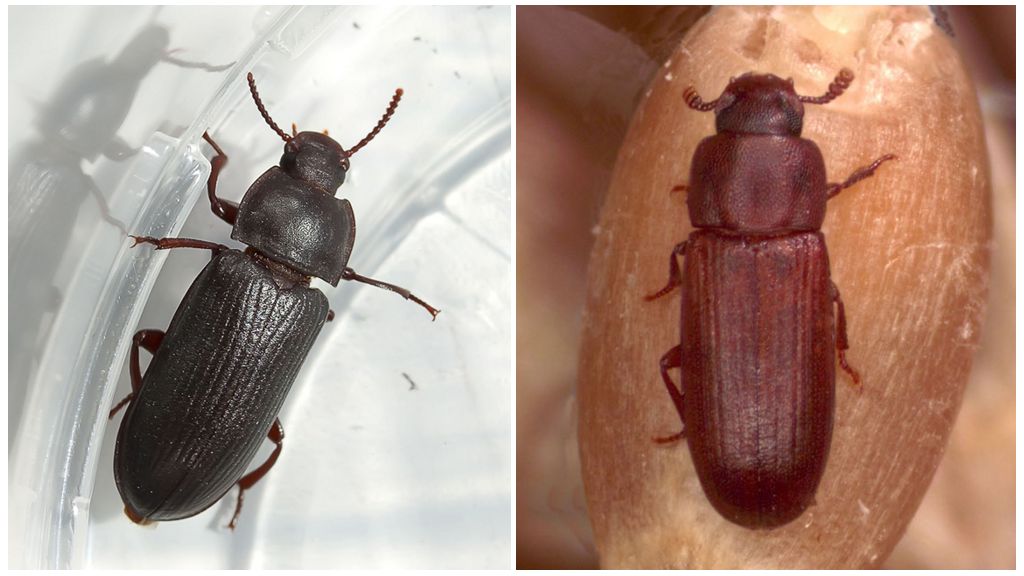
Little Khrushchak
The small flour beetle has a brown or red body color and causes considerable damage to the food reserves of a person in the apartment. It is widespread in Russia and Ukraine, where it often becomes the culprit of damage to grain in granaries, mills and other places of storage of bulk products.
The red-brown beetle has a smaller size (up to 3.6 mm), but loves to settle in various food stocks in the apartment: in flour, nuts, dried fruits and other fruits of plants.
On a note!
Unlike large Khrushchaks, the small one has wings and is able to fly. Males of such a flying insect have a rounded abdomen at the end, covered with hairs. In females, the tip of the body is bare; they are able to lay up to 1 thousand eggs in egg-laying.
The larva of the small Khrushchak has a flat shape and length up to 7 mm, body color is yellow-brown (light or dark shades), the head is flattened. The body is covered with hairs and ends with 2 spikes. The pupa is painted in a light yellow color, and its body is shiny and completely bare. The development cycle of a flying black beetle is 20-120 days, and the growth rate directly depends on the amount of food and living conditions.
Black Khrushchak
The 3rd type of beetles has a darker, almost black body color, the size of which is up to 5.5 mm. Their body color is matte; the color varies from black to brown.
Unlike other species, the black small bugs, the Khrushchaks prefer to live only in heated rooms. Settling in the kitchen in people's homes and apartments, they are able to spoil not only food products, but glue, fabrics (knitwear and nylon) and other products. They are found much less often than their large and small brothers. Larvae grow to a size of 12 mm.
Important!
However, settling in an apartment, a colony of Khrushchaks can do a lot of harm. Feeding the feces of other pests (mice and rats), they can become carriers of infections and worms.
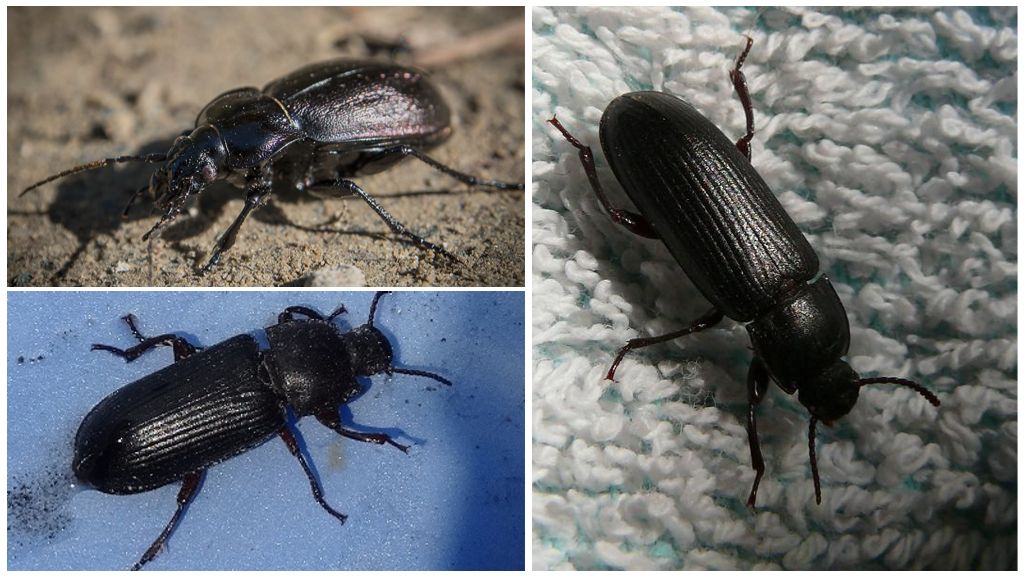
Bug Control Methods
If black bugs appeared in the apartment, then first, according to external signs, their appearance should be determined.
Depending on the identification carried out, various control methods can be used to help get rid of black beetles:
- combating skin-eaters and carpet pests should be done by processing carpets and furniture; first they need to be wiped with a sponge soaked in a soap solution, and then with a solution of vinegar; a day after processing, carpets and furniture should be well vacuumed, and the contents of the bag must be discarded, because there may be insect eggs;
- for the destruction of the flour hrushchak, it is necessary to carefully sort through all the stocks of bulk products (flour, cereals, sugar, etc.), if they are found, everything must be discarded, because they are not suitable for eating;
- inspect the contents of all cabinets for black or red small bugs, then make a solution of 1 tbsp. l soda per 1 liter of water and treat all surfaces and shelves inside the cabinets, the dishes must be washed with detergents and doused with boiling water;
- wash all surfaces in the kitchen with a solution of acetic acid or use boric acid powder, which should be rubbed into the possible habitat of the parasites;
- treat the flooring and baseboards with any aerosol containing insecticide against insects (Dichlorvos, Combat, Raid, etc.);
- clothes should be boiled or washed in hot water (not lower than + 60 ° С).
On a note!
The procedure insect killing it should be repeated 2 times a week for a month, because new generations of bugs that also need to be destroyed will be hatched from laid eggs of insects.
If the measures taken do not help or there is no time to struggle with bugs in the apartment for a long time, then it is better to contact professionals. There are companies that use special drugs to carry out pest control (extermination of insect pests) in any residential premises.
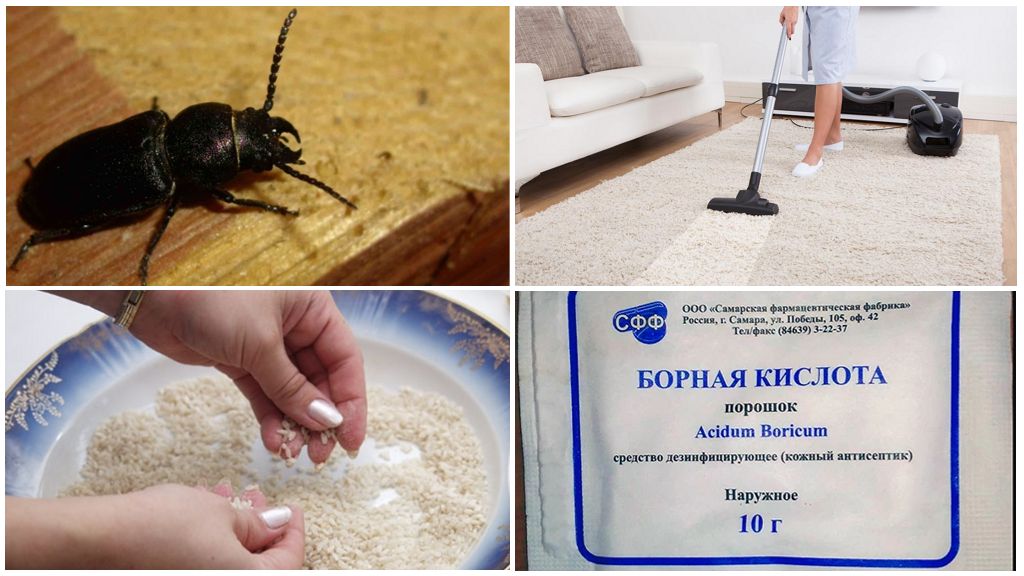
Bark beetles and other inhabitants of wooden houses
In addition to the above beetles that live in apartments, there are specific species that live in a wooden house. Most often, insects enter the house along with infected building materials and pose a great danger to all wooden structures and furniture. In a short time they can not only destroy valuable property, but also turn into dust all the walls and structures of the building.
They differ in that their main food is wood:
- bark beetles - a large group of beetle beetles (750 species), the size of the insect is 5-10 mm, bark beetles in the forest carry out sanitary work, destroying rotten trees, and in a wooden house they are considered pests, they gnaw through long passages in the wood and destroy it, the insect larva is capable of several years to "eat" the whole house;
- grinders - long oblong small bugs 2-10 mm in size of black or brown color, belong to coleopteran insects, are dangerous for wooden structures, furniture, books and cardboard, feed on the grain stock, making characteristic ticking sounds; at the slightest danger, they pretend to be dead, black bugs are active in the house at night and can only be determined by rustling and other sounds;
- barbel - larger pests (size up to 35 mm) of black, brown or blue-green color, with a large mustache (10 times longer than the body), larvae are large, up to 3 cm in size, capable of damaging a wooden log house in a private house, turning structures into complete trash in a relatively short time, they prefer to settle in coniferous species of wood (in partitions, floors, on the roof, etc.).
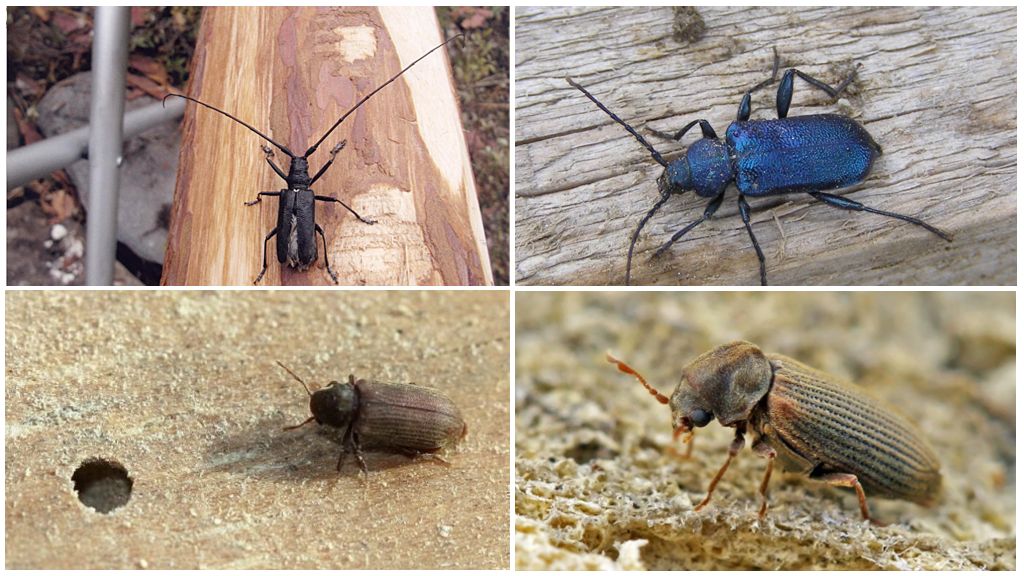
Interesting!
All beetles gnawing at wooden walls or furniture in the house make a characteristic sound, similar to the ticking of a mechanical clock. In the old days, such parasites were called the "hours of death", due to the fact that their activities often led to the collapse of wooden houses and the deaths of their inhabitants.
The development of beetles feeding on a tree occurs in the same way. Females lay eggs in the cracks, from which larvae appear that bite into the wood walls. They gnaw passages in it and spoil the appearance and structure of wooden walls and floors. After the larvae turn into pupae, adult individuals creep out to the surface.
Fight against tree bugs
The most effective and easiest way is to take preventive measures, i.e. treating building wood with special antiseptic agents that will protect all structures from pests.
However, if such domestic beetles have already settled in a wooden house, then there are several recipes for their extermination. The peak of their activity falls on May-June, it is during these months that the struggle will become the most effective.
Folk remedies for the destruction of pests in wood:
- the use of liquid paraffin, which is injected with a syringe into the found passages and holes in the tree, you can fill them with wax;
- mix turpentine and kerosene in a ratio of 3: 1 and pump into slots and passages;
- a mixture of naphthalene (10 g) and gasoline (100 ml) is applied to the wood surface with a brush;
- one of the effective methods is heating the rooms in the house with hot air (at a temperature of + 60 ° C) or freezing in winter frosts (at -5 ... -10 ° C);
- fill the passages and crevices with a mixture of naphthalene, resin and carbolic acid;
- spraying a solution of copper sulfate;
- Before starting work, it is better to clean the holes in the walls with wire.
In addition to folk methods and solutions, experts recommend the use of chemical preparations:
- insecticides containing cypermethrin, organophosphorus compounds and lambda-cygalotrin, of these chemicals the most effective is Fufanon, the treatment of which should be carried out at least 2 times with an interval of 2 weeks;
- aerosols Prima-71, Bichromat, Dichlorvos - are used to control larvae in July.
If after the events black and gray bugs still remain in the tree, then you should seek help from specialists who will help to neutralize the wooden house from dangerous pests.
